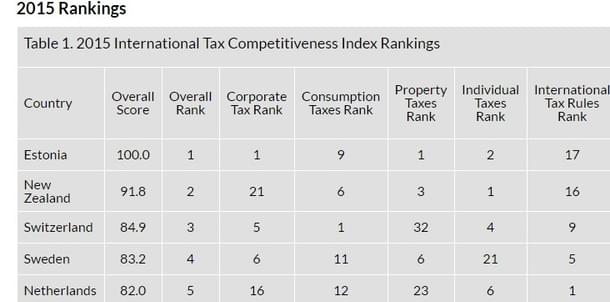World
Five Big Reasons To Applaud the Improbable Success of Estonia And Five Small Reasons To Worry
Daniel J. Mitchell
Jun 22, 2016, 01:15 PM | Updated 01:15 PM IST
Save & read from anywhere!
Bookmark stories for easy access on any device or the Swarajya app.


Communism is an evil system. Freedom is squashed and people are merely cogs in a system where government exercises total control over the economy and destroys the lives of ordinary people. It also erodes the social capital of a people, telling them that individual initiative and success are somehow exploitative and evil.
So when such a system ultimately collapses after being in place for decades, one would not expect a fast rebound. After all, it’s presumably difficult to restore the characteristics of a free society such as a work ethic, personal responsibility, and a spirit of entrepreneurship.
This is why Estonia is such an improbable success. It was under the heel of Soviet communism from World War II until the early 1990s.Yet as illustrated by this television program about Estonia, which recently aired across the country, there’s been a remarkable recovery and renaissance in this small Baltic republic.
The program mostly focuses on the entrepreneurial success of Estonia, so I want to augment the policy discussion.There are five big reasons why Estonia is a role model for post-communist societies-
First, Estonia is a leader in the global flat tax revolution. It has a simple and fair system with a relatively reasonable rate of 20 percent.
Second, the flat tax rate has been continuously lowered from the original 26 percent rate when the system was adopted in the early 1990s.
Third, the business tax system is remarkably benign with a rate of 20 percent that is imposed only on dividends.
Fourth, the combination of these factors helps give Estonia the most attractive tax system of all OECD nations according to the Tax Foundation-
Estonia currently has the most competitive tax code in the OECD. Its top score is driven by…positive features of its tax code. First, it has a 20 percent tax rate on corporate income that is only applied to distributed profits. Second, it has a flat 20 percent tax on individual income that does not apply to personal dividend income.

Fifth, there are other pro-market policies. Estonia is ranked #22 in Economic Freedom of the World, putting it in the “most free” category. That’s only six spots behind the United States.
But good policy is not the same as perfect policy.So while there’s much to admire about Estonia, here are five things about the country that could be improved.
First, the burden of government spending is excessive in Estonia. According to the most recent OECD figures (see annex table 25), 38.5 percent of economic output is diverted to the state, leading to substantial misallocation of labor and capital.
Second, like other nations in the former Soviet Bloc, there’s a demographic challenge. The welfare state may be modest by European standards, but in the long run it is very unaffordable in part because of a fertility rate of 1.59, which ranks 183 out of 224 jurisdictions.
Third, there was a very impressive burst of liberalization after escaping Soviet tyranny, but the commitment to economic reform has since stagnated. Estonia’s EFW score peaked at 7.90 in 2005, 9th-highest in the world, and is now down to 7.61, which puts Estonia in 22nd place.

Though it’s worth noting some of the erosion in economic liberty is the result of European Union rules that require trade barriers on non-EU products (which is the same reason why the UK may enjoy higher trade over time if it votes to leave the EU).
Fourth, the social insurance tax rate is a stifling 33 percent, driving a significant wedge between what an employer must pay and what an employee actually receives. The only mitigating factor is that a small portion of that money goes to a funded pension system (i.e., a partially privatized Social Security system).
Fifth, it is too cold and dark for much of the year. To be sure, that’s not a complaint about policy. But it’s one of the reasons why I recommend Australia for people seeking a haven from bad U.S. policy.
All things considered, Estonia deserves a lot of praise. The problems that remain are modest compared to the nation’s major achievements.
P.S. Lest I forget, one of the admirable things about Estonia was the way the government cut spending in response to the economic crisis at the end of last decade. And I’m talking genuine reductions in spending, not the make-believe we-didn’t-increase-spending-as-fast-as-we-planned “cuts” that often take place in Washington.
P.P.S. In a shocking display of either sloppiness or malice, Paul Krugman blamed Estonia’s 2008 recession on the spending cuts that took place in 2009.
In reality, Estonia’s relative spending discipline has paid dividends. The economy quickly recovered and is out-performing other European nations that chose either tax increases or Keynesian spending binges.
This piece was first published on the author’s personal blog and has been republished here with permission.
Daniel J. Mitchell is a Senior Fellow at the Cato Institute, Washington’s premier free-market think tank.





